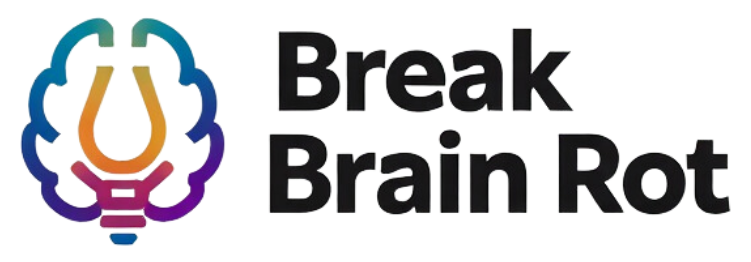Imagine waking up each day with a clear mind, untethered from the constant pull of notifications and updates. A life where you feel more focused, productive, and present is within reach. Welcome to the transformative power of a structured social media detox. This step by step guide to social media detox will show you how intentional disconnection can not only clear brain fog but also improve your overall mental well-being and productivity. Let’s dive in and reclaim your clarity.
Table of Contents
- What Is a Social Media Detox, and Why Does It Matter?
- Identifying the Signs You Need a Social Media Detox
- The Science Behind Social Media Use and Brain Fog
- A Step by Step Guide to Social Media Detox
- How to Maintain Long-Term Benefits After a Detox
- FAQs About Social Media Detox and Brain Fog
What Is a Social Media Detox, and Why Does It Matter?
A social media detox is the conscious decision to step away from social platforms for a specific period. It’s designed to break the habit of constant scrolling and give your brain a much-needed reset. Instead of being ruled by notifications, you regain control over how you spend your time.
Why does this matter? Social media addiction is real, and its impact is far-reaching. From mental fatigue to reduced focus, being constantly connected can lead to brain fog—a state of mind where productivity plummets, thoughts feel scattered, and the ability to concentrate is compromised. By unplugging, you’re creating space for mental clarity, improved sleep, and emotional well-being.
Learn more about the importance of digital wellbeing here.
Identifying the Signs You Need a Social Media Detox
Do you wonder if you’re spending too much time on social media? Some common signs that you may need a break include:
- Feeling anxious or stressed after scrolling for hours.
- Checking your phone compulsively, even when you have nothing specific to look at.
- Difficulty concentrating or making decisions due to mental fatigue.
- Lack of self-esteem caused by constant comparisons with others online.
Social media can also contribute to information overload, making it harder to retain details and process data effectively. This overload often fuels brain fog, leaving you exhausted and disconnected from the world around you.
It’s crucial to pay attention to these warning signs and take proactive steps to protect your mental health. Check out this study on how social media affects mental health.
The Science Behind Social Media Use and Brain Fog
Social media is intentionally designed to keep users engaged for as long as possible. Platforms use dopamine-driven feedback loops to reward scrolling or interactions, making them highly addictive. This overstimulation of the brain can lead to mental fatigue and a lack of focus.
Information overload is another culprit. With endless feeds of content, your brain has to work overtime to process what’s relevant versus what can be ignored. Over time, this can lead to symptoms such as difficulty concentrating, forgetfulness, and poor sleep—hallmarks of brain fog.
Additionally, spending too much time on screens can disrupt your circadian rhythms, making you more susceptible to stress and reduced mental clarity. If you’ve noticed these patterns in your own life, it might be time for a break.
Read more about how digital habits impact productivity or explore this research article.
A Step by Step Guide to Social Media Detox
Here’s how to successfully complete a social media detox and experience its incredible benefits:
Plan Your Detox
- Set clear goals: Decide why you’re detoxing—improved focus, better sleep, or reduced anxiety.
- Track your usage: Apps like Social Fever or Moment can help you identify how much time you typically spend on social media.
- Pick a timeline: Start with a realistic time frame, such as one week, and adjust as needed.
Establish Clear Boundaries
- Delete or disable apps temporarily to remove temptation.
- Create “no-phone zones” in your home, such as the dining table or bedroom.
- Limit usage to specific times during the day, if a complete detox isn’t possible.
Replace Screen Time with Meaningful Activities
- Pick up a new hobby like painting, writing, or gardening.
- Connect with friends and family in person to strengthen relationships.
- Engage in mindfulness practices, such as meditation or yoga, to foster digital wellness.
Explore the benefits of mindful living and utilize tools for digital well-being.
How to Maintain Long-Term Benefits After a Detox
The goal of a social media detox is to reset your habits and achieve balance. To maintain these benefits long-term, consider the following:
Build Healthy Digital Habits
- Schedule regular check-ins to review your usage and make adjustments.
- Follow accounts that inspire positivity and mute or unfollow those that drain your energy.
Recognize Triggers to Avoid Relapse
- Become aware of when you feel stressed or overwhelmed online.
- Create a strategy to overcome FOMO, such as focusing on the benefits of offline activities.
Incorporate Mindfulness into Daily Routines
- Practice journaling to reflect on your social media habits.
- Set intentions each morning about how you’ll use tech for the day.
Build mindful digital habits or review tips on digital boundaries.
Frequently Asked Questions
How does a social media detox help with brain fog?
A detox gives your brain a break from overstimulation, reduces information overload, and improves focus.
What are practical steps for someone starting their first social media detox?
Start small by setting a timeline, using usage tracking apps, and establishing phone-free zones.
How long should a social media detox last for noticeable results?
Many people see benefits in as little as one week, but longer detoxes yield deeper mental clarity.
Can I still use social media in moderation after a detox?
Yes, moderation can be achieved with clear guidelines and awareness of your triggers.
What are examples of alternative activities to replace screen time?
Explore creative hobbies, outdoor activities, or in-person social connections to fill the time.
Conclusion
Breaking free from social media through a structured detox allows you to regain mental clarity, focus, and a renewed sense of presence. By following this step by step guide to social media detox, you’ll not only reduce brain fog but also create space for meaningful experiences. Start your detox today to unlock a more focused, productive, and balanced life. Share your experiences and inspire others to embark on their own path to clarity!


